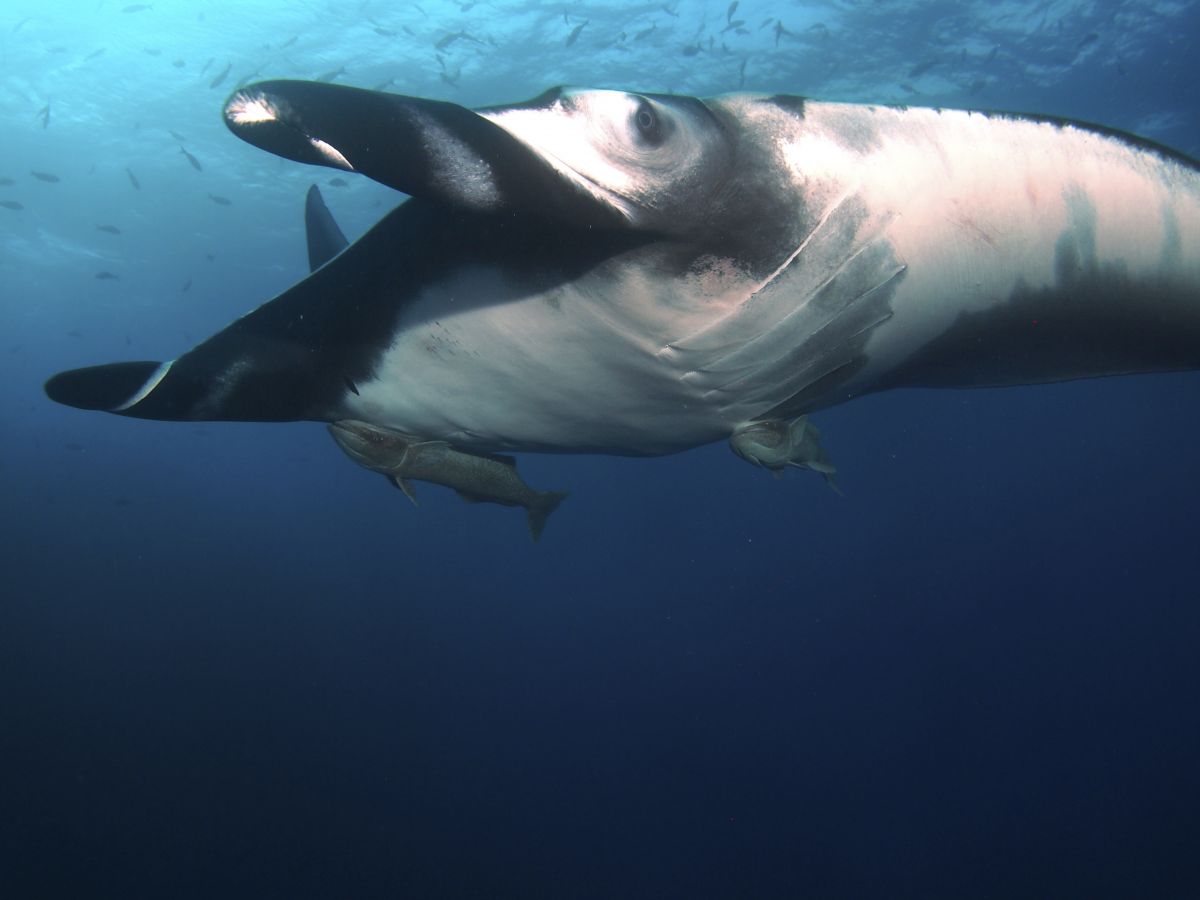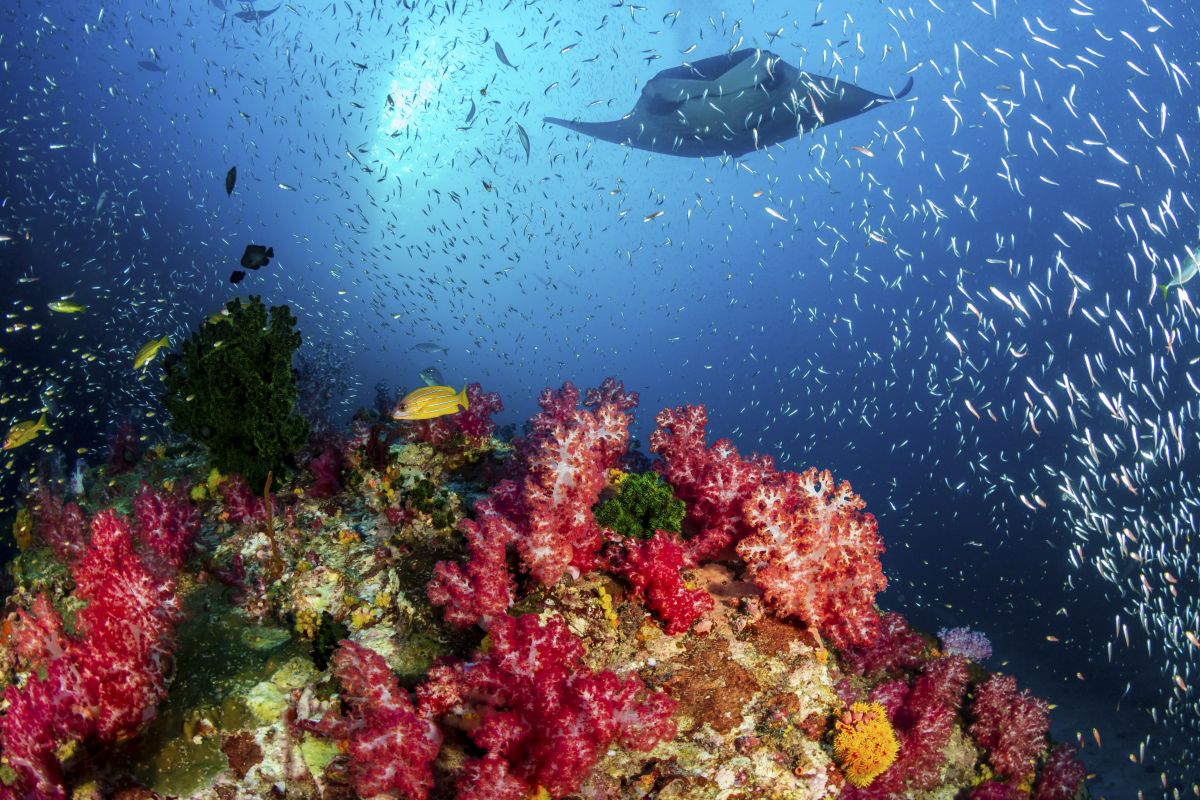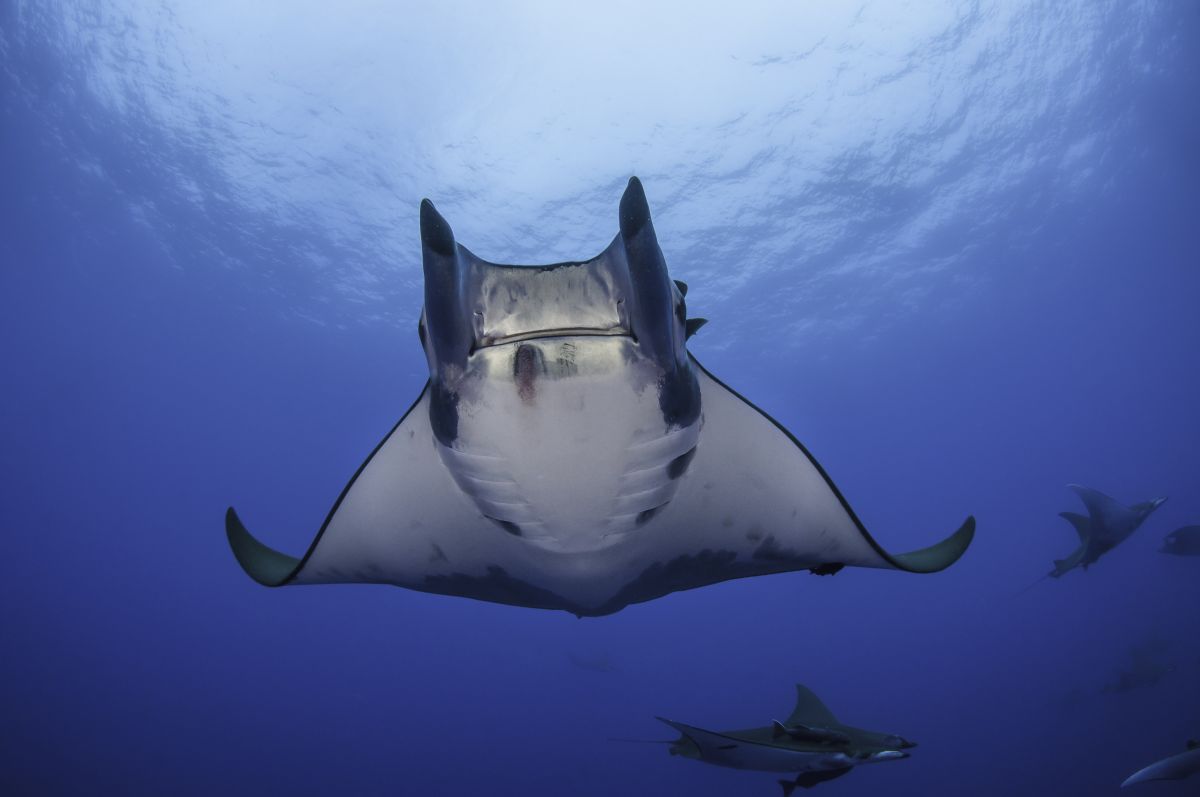- More More
- Blog
- Inspire me
- Groups
- Offers More
- Dive Courses More
- Liveaboards
More

Liveaboard Trips
On-board accommodation offering the opportunity to live right over the dive sites and to experience secluded dives...
Diving regions...
- LATEST AVAILABILITY BY REGION
- Red Sea availability
- Maldives availability
- Indonesian availability
- Socorro Mexico availability
- Galapagos availability
- ALL LIVEABOARD DIVING REGIONS
- Bahamas
- Bikini Atoll
- Caribbean
- Cocos Island
- Destinations
MoreDIVING REGIONS...
Our Top destinations....Why not try....
Find a trip
- Resort
- Liveaboard
Best Places to Dive with Manta Rays

26 Jan 2025, The Regaldive team
There are a handful of underwater encounters that never get old, the kind of experiences that bring joy and a smile to scuba divers from all around the world. One such encounter is sharing the water with a majestic manta ray. Thought to be the ‘world's smartest fish’ mantas are found in tropical and subtropical waters in all the major oceans, but for the best chance of seeing them for yourself we’d recommend these top five destinations featured by Regaldive.
Maldives

A renowned romantic getaway for some but a sensational scuba diving destination for us.
From 5-star luxury resorts and an increasing number of affordable options we’re confident we have a diving holiday to the Maldives that suits your budget. Manta ray encounters are common throughout the year, but there are certain areas which offer more reliable sightings especially when more plankton is present in the waters. One such area is the southern Ari Atoll. Vilamendhoo Island Resort has been a firm favourite over the years with its spectacular house reef just a few fin kicks away from the sun kissed beaches. In the later half of the year, mantas are often seen nearby. Built by divers, for divers, Boutique Beach offers an incredible diving experience for all. Mantas are regularly seen feeling in the lagoon and at the cleaning station at Rangali in the first few months of the year.
Perhaps you’d like to escape dry land altogether in which case you could hop on a liveaboard. We feature a selection of boats operating interesting itineraries throughout the Maldives visiting the best sites in season. Look out for itineraries such as ‘Pelagic Magic’ and Hanifaru & North’ where manta ray encounters are high on the agenda. Along with whale sharks, majestic mantas aggregate in Hanifaru Bay for the annual feeding frenzy (July to October). Encounters here are snorkelling only, but there are multiple cleaning stations nearby, so divers get the best of both! Learn more about our Maldives liveaboards and their itineraries here.
No matter how you choose to visit the Maldives, we’re confident that it provides one of the best opportunities to see mantas (particularly reef mantas) in the world.
Socorro

Image by Mat Howell
As diving destinations go, they don’t get much more remote than this! As long as you can stomach the 36-hour sea crossing, mantas (very big oceanic ones!) are as good as guaranteed in the waters around the islands that have become dubbed the ‘Galapagos of Mexico’.
Not only are the encounters almost guaranteed, from personal experience we can tell you that the giant Pacific mantas seem to enjoy interacting with divers at Socorro. I’d be very surprised if you did not come home telling stories of how one flew just inches over your head…again…and again!
Liveaboard diving only is the order of the day at Socorro and due to the potentially challenging conditions it’s recommended for advanced divers. We feature the two most reputable operators in the region; The Nautilus Fleet and the Pacific Fleet (Solmar V).
More than mantas, you can expect to see up to 10 different species of sharks and at the right time of year and if you’re very lucky indeed - even humpback whales! Socorro remains one of the best diving trips I’ve had the pleasure of taking and I’m sure you wouldn’t be disappointed either.
Find out more about diving in Socorro.
Galapagos

Image by Humboldt Explorer
The destination itself is synonymous with the expression ‘bucket list’. We don’t think we've ever met a single diver who does not dream of visiting the Galapagos someday; an undeniable mecca when it comes to pelagic encounters and much like Socorro, you can be almost guaranteed sightings of manta rays especially from December to May, in season.
Also, like Socorro, it’s more than ‘just’ mantas on the menu when you take to the water during this warmer season. Walls of scalloped hammerhead sharks are often sighted in their hundreds and several species of rays and sharks are seen around the islands. The marine life here is incredible and often unique. Spotting penguins and marine iguanas is also possible. We can’t leave without mentioning the other ‘gentle giants’ of our oceans. Some of the largest recorded whale sharks are seen up at Wolf and Darwin from June to November.
For divers, the best way to experience the Galapagos Islands is by liveaboard. The Humboldt Explorer spends four days at Wolf and Darwin and a dive at Cousins Rock, where mantas and devil rays are regularly seen. We feature five liveaboards in the Galapagos, all offering their own unique and memorable diving itinerary to suit a range of budgets. If you can stay longer, there's opportunity to extend your stay in resort to experience the topside wildlife too.
View all our Galapagos liveaboards.
Indonesia

Diving opportunities with manta rays amongst the tropical islands of Indonesia are numerous. Lying at the heart of the Coral Triangle, the marine biodiversity is second to none. This makes it one of the most popular destinations for divers to visit, time and time again. The upwelling of nutrient rich water provides perfect feeding grounds and it’s at the cleaning stations nearby where divers have the best encounters. Both reef and oceanic manta rays are seen throughout the vast archipelago, but never together.
The most popular manta encounters in Raja Ampat are best visited by liveaboard during the months from November to March, but there are several areas nearby to resorts too. Oceanic mantas are regularly seen at ‘Blue Magic’ and 'Magic Mountain’ during these months. Both species can be seen throughout the year in Komodo National Park with numbers increasing with the plankton blooms. The most iconic site being ‘Manta Alley’, but there are others too. The region is best explored by liveaboard or from the comfort of a resort such as the spacious seafront Komodo Resort or Kalimaya Dive Resort. Click here to find out more about liveaboards in Indonesia.
There are other locations in Indonesia where you can encounter these enigmatic creatures. For those who like to get away from the world and seek big fish encounters, head to Derawan off the east coast of Kalimantan. The sites of Sangalaki Island are synonymous for manta ray encounters and there are plenty of other sites where pelagic encounters are commonplace. In addition, there are two sites off the coast of Bali where divers can observe mantas, namely at ‘Manta Point’ off Nusa Penida where a black manta is often seen at the cleaning station.
Find out more about diving locations throughout Indonesia .
Azores

A little closer to home, the islands of the Azores are renowned for their seasonal pelagic encounters. The seamounts and dive sites such as Ambrosio (from Santa Maria island) attract devil rays in large numbers as they come to feed from June to October. Little is known about these shy and elusive creatures, but sicklefin and spinetail devil rays are often seen, as well as oceanic mantas; all members of the mobulid family.
Diving experiences in the Azores are suited to all. The volcanic topography provides homes for sub-tropical fish species and dramatic photographic shots. The seamounts provide a resting place for a variety of pelagic species and several species of whale can be seen on organised excursions (rare to see them underwater). In addition, each island has its own topside characteristics, making the Azores a great twin centre / island hopping destination.
Find out more about diving and topside adventures in the Azores.

These are just five of the top destinations in the world for mobulid (manta and devil rays) encounters for divers, but there are of course many more places for you to consider. Some of these destinations attract fewer people, in some part due to the difficulty, time and/or cost to reach but they should not be ruled out. Yap in Micronesia is one such example, the Yasawa Islands of Fiji another. Recent legislation has provided protection for the reef and oceanic mantas in Mozambique. There’s a small population being researched near Alphonse Island in the Seychelles, and of course don't forget the famous night dive off Big Island in Hawaii.
If you’ve yet to share the water with the majesty that is a manta or devil ray, or if you’ve seen them dozens upon dozens of times, we believe you’ll never grow tired of such an incredible and memorable experience. Have a chat with our experienced team to discuss your options. Let’s get you back in the water for a mobulid encounter or two!
For those who are interested in learning more...
The Manta Trust plays a significant role in research and conservation as well as protecting rays throughout the world. They have projects in several destinations featured by Regaldive. Learn more about the mobulid family and the fantastic work of the Manta Trust.







